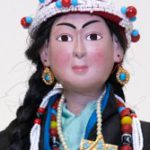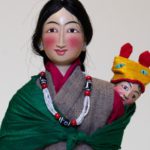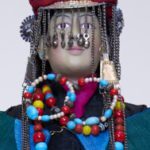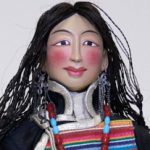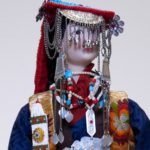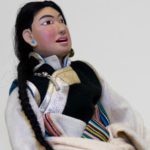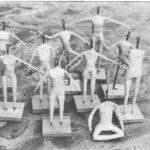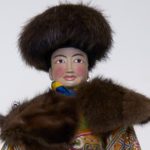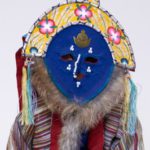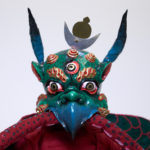Regional Clothing
Traditionally, the Tibetan people wore clothing that suited a region’s natural environment, climate, lifestyles, and local customs. Interestingly, this presented a challenge for the Drepung Loseling monks who, intent on creating authentic regional garments, found it impossible to travel back to Tibet to see and document them, first-hand. As an alternative, the monks relied on their general knowledge, archival photographs, and oral history, sometimes adding their own creative and aesthetic choices to complete the garments.
The result is a rich and detailed representation of traditional clothing that recaptures not only distinct regional characteristics, but also basic similarities that crossed all regional boundaries. For example, with minimal modifications, the traditional chuba—along and full outer robe with wide, elongated sleeves—was as adaptable to the lifestyles and customs of nomadic herdsmen in eastern and northern Tibet, as it was for farmers in the central region.
Similarly, regardless of regional lifestyles and customs, the Tibetan people showed their love of bright colors in their use of richly patterned fabrics and decorative trims on their chubas, hats, boots, and hair, as well as in their colorful ornaments and jewelry.
In fact, the Tibetans—male and female, alike—loved to wear an abundance of jewelry, not only for pleasure, but as symbols of their Buddhist beliefs, status, and property. Further, it was customary for families to “bank” whatever wealth they had in the form of jewelry—coral, turquoise, jade, silver, and gold among the most highly valued.
Since 1959 traditional regional clothing is said to be on the decline, increasingly confined to the more remote areas, certain ceremonial occasions, and to elders of the Tibetan ethnic minority.


